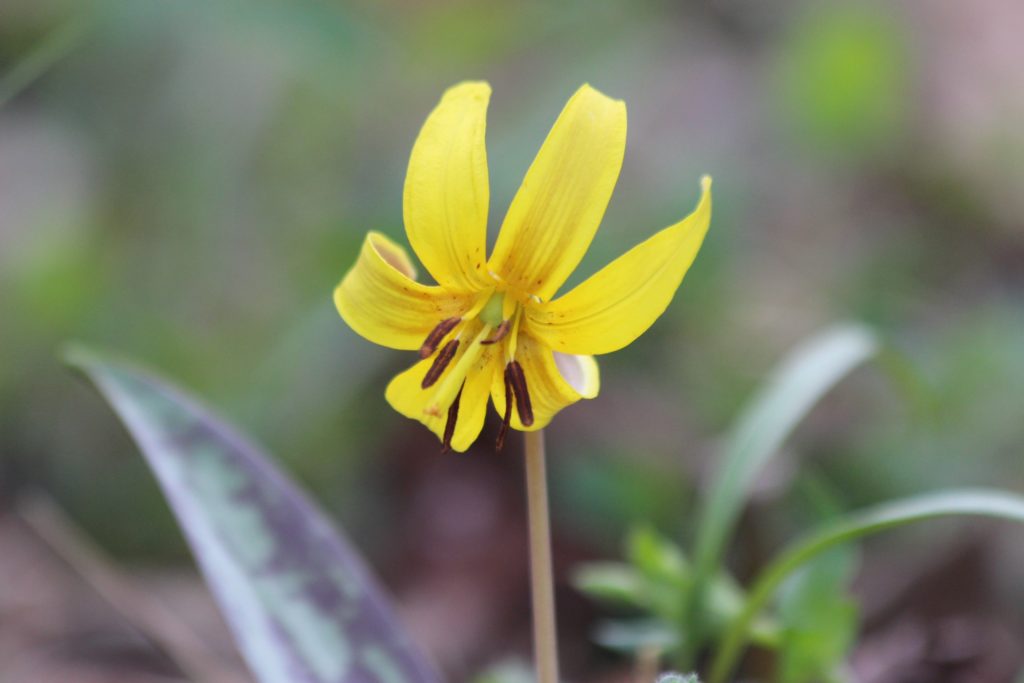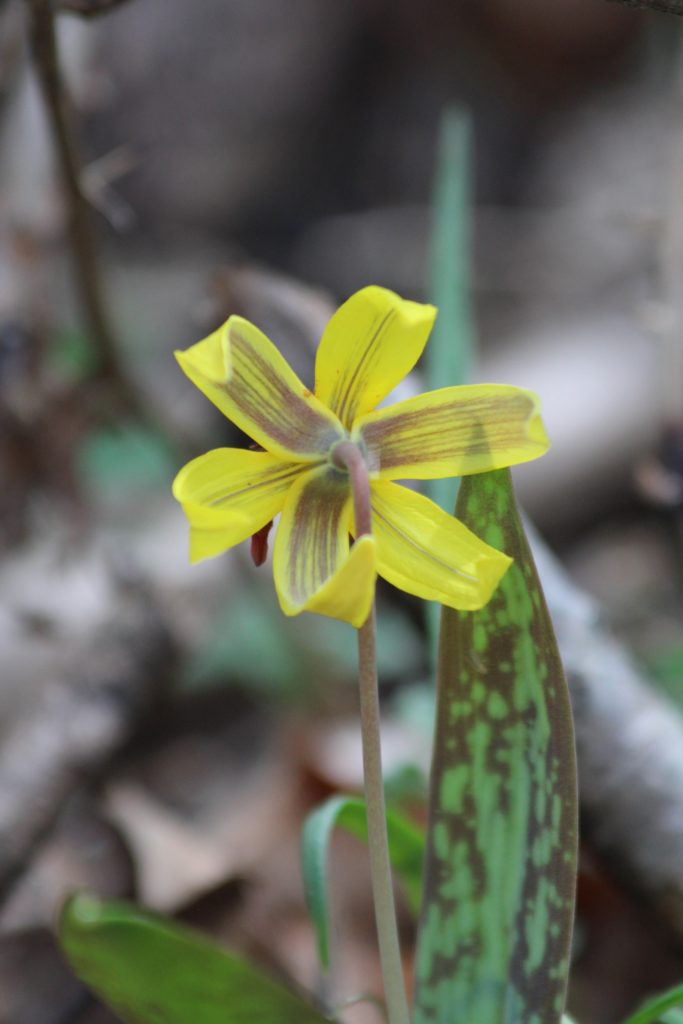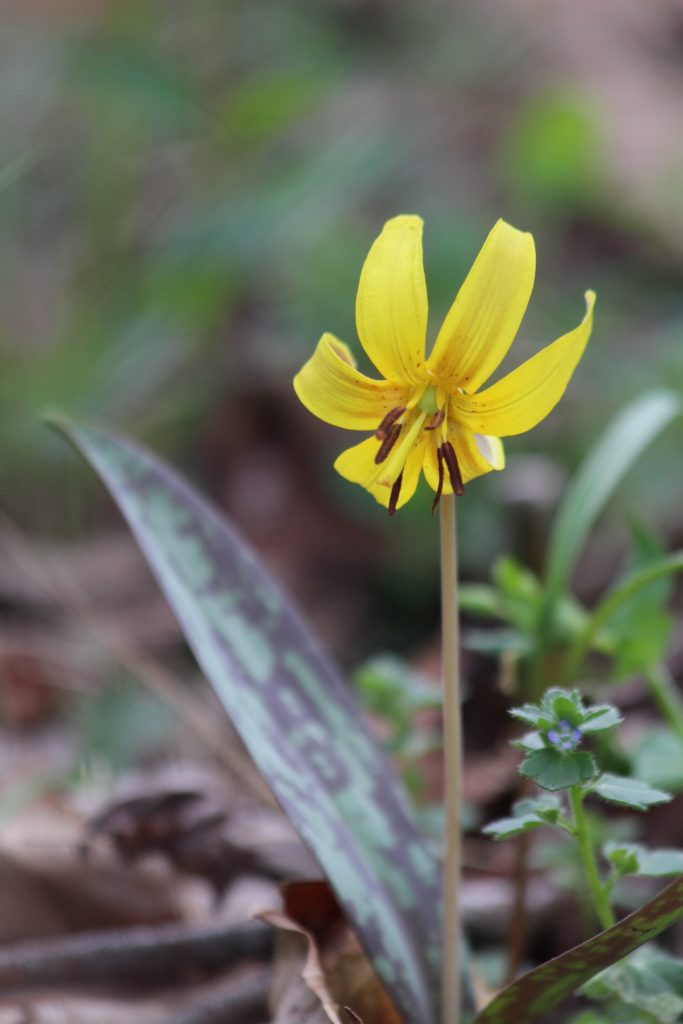
What’s in Bloom | Yellow Trout Lily
April 11, 2022
Yellow trout lily (Erythronium americanum) is among the many early-blooming spring ephemerals found in moist deciduous forests and woodlands across the Eastern US. The flower can be found blooming in April and May in most counties of Virginia and is relatively common in the mountains and Piedmont, though less common in the Coastal Plain.
The plant is colonial and the leaves can be seen in small to large populations spread across the forest floor. Interestingly, individuals generally won’t flower for the first 5-7 years of their lives and typically only 0.5% of a population will flower in any given year since the majority of populations will be immature shoots. For those lucky enough to come across a stand while flowering, you will find beautiful solitary golden flowers – quintessential to the lily family. The green and maroon shiny leaves are oblong, 5-20cm long and bear a mottled pattern reminiscent of the markings on brook trout (for which the trout lily was named). Typically a flowering plant produces two leaves while non-flowering have a single leaf.
There are two other species of Erythronium that are native to Virginia. White trout lily (E. albidum) is extremely rare and ranked as imperiled in Virginia with likely fewer than 20 populations in the state. Dimpled trout lily (E. umbilicatum) is endemic to higher elevations in Virginia and tends to have smaller flowers than E. americanum.
Benefits to Biodiversity | These flowers attract pollinators including bumble bees and mining bees. In fact, trout lily has a specialist relationship with Andrena erythronii, a mining bee. Specialist bees are bees that visit just one species, genus, or family of plants to gather pollen. This represents a critical relationship as they have fewer sources to choose from to collect their pollen. The seeds are in part dispersed by ants, which is also the case for many other spring ephemerals.
Sources: Flora of Virginia, wildflower.org






